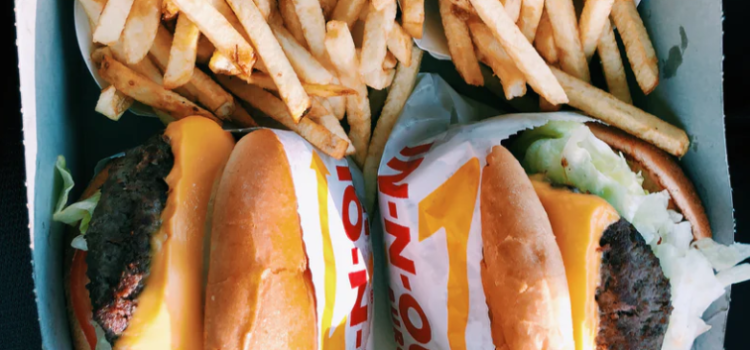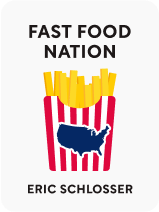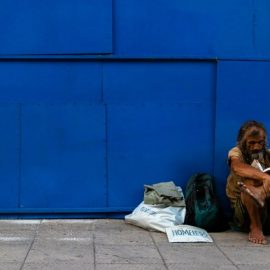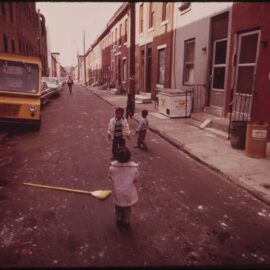

This article is an excerpt from the Shortform book guide to "Fast Food Nation" by Eric Schlosser. Shortform has the world's best summaries and analyses of books you should be reading.
Like this article? Sign up for a free trial here .
What is the history of fast food? How did fast food become a part of our daily lives?
The history of fast food shows how defining fast food is as a culture. From early beginnings in Southern California, fast food grew exponentially.
Read more about the history of fast food below.
History of Fast Food: We Are What We Eat
The history of fast food might seem obvious, since most Americans have eaten fast food at some time or another in their lives. As the reach of major fast food chains like McDonald’s, Wendy’s, Burger King, and Taco Bell has extended across the planet, the same can increasingly be said of most people around the world. As it has done so, fast food has come to stand as a hallmark of our civilization and our time. Just as we ponder the amphorae and marble ruins of the ancient Romans, so may future scholars study the discarded Big Mac wrappers and golden-arched fast food restaurants of our culture.
For indeed, food is one of the defining traits of a culture—it shows how we live, how our economy functions, how our political institutions operate, and what we value and prioritize as a society. Since its rise in the postwar United States, fast food has worked its way deep into the fabric of America’s social, economic, educational, and political institutions. In the 30 years between 1970 and 2000, consumer spending on fast food in the US rose from $6 billion to $110 billion.
(Shortform note: Fast Food Nation was originally published in 2001. As such, the statistics cited throughout the book and throughout this summary do not represent the most up-to-date data. Where possible, we have supplemented the numbers in the book with more current figures.)
These numbers give a glimpse of the grip that fast food has obtained over American life, but they can only tell part of the story throughout the history of fast food. Because the story of fast food is about much more than the rise of an industry and the success of a few entrepreneurs—it is a story about the fundamental transformation of a society. The sheer size of the fast food giants and the spread of their business practices to other sectors of the economy has wrought enormous changes in:
- How American food is produced and sold
- The physical health of the population
- The conditions under which we work and the wages we are paid for our labor
- The legal and political system under which we live
- The appearance of our towns and cities
In many ways, the story of fast food is the story of the American West—and specifically, the story of Southern California in the postwar boom years of the 1950s. It was here that the low-density suburban housing sprawl, automobile-driven economy, and youth-centric consumer culture that would come to define so much of the rest of the country (and prove so conducive to the fast food industry’s success) got its start. Underpinned by a political ideology that emphasized low taxes, weak regulation of business, and small government, the Los Angeles suburbs of the 1950s proved to be fertile soil in which the fast food industry could sprout and grow to take over the country.
SoCal Origins
The history of fast food begins in Southern California. The fast food industry has its roots in the risk-taking, unconventional ideas of a handful of entrepreneurs. A combination of US public policy choices and broader macroeconomic trends fostered an ideal business climate in Southern California for their success and laid the groundwork for an economic transformation of the region—one that would eventually become the prototype for the rest of the country. Taxpayer-funded irrigation projects and publicly subsidized highways were drawing people to California in droves, laying the groundwork for a mass consumer-driven retail economy (powered by the ease and convenience of the automobile) that California would export to the other 49 states.
This population explosion was also driven by another stream of federal investment in Southern California—defense spending. During World War Two and the years immediately following, the US government pumped nearly $20 billion into California, building airplane factories, steel mills, military bases, and naval ports. During the war years alone, federal spending accounted for approximately half of Southern Californians’ personal income.
If the old cities of the East Coast were shaped by the railroad and the trolley car, then Southern California was defined by the automobile. LA’s growth happened precisely at the time when mass-produced cars were becoming affordable to the growing middle class—indeed, from 1920 to 1940, the region welcomed 2 million residents from all across the rest of the US. The automobile sculpted the city, giving rise to LA’s famous low-density, detached-home model of growth (with each unit having room for a garage or driveway with one or two family cars). By 1940, LA had roughly one million cars, more than the vast majority of most of the states. Much of this was fueled by federally funded highways, which amounted to a public subsidy of the major automakers.
Local entrepreneurs quickly saw that they needed to adapt their business models to account for the car-driven growth of the region. Zipping by in their cars, the new consumers placed a premium on speed, convenience, and easy access from the freeways. Thus, Southern California became home to the world’s first motel and drive-in bank. The lesson was not lost on the region’s restaurateurs—beginning in the 1940s, Southern California saw an explosion of drive-in restaurants offering curbside service to motorists waiting in their cars. The speed of the automobile made flashy marketing a necessity: drivers needed to be able to see the restaurant signs as they whizzed by. With a corresponding rise in the population of teenagers in Los Angeles County, the new drive-ins fit in perfectly with the rising youth culture, offering a unique blend of girls, cars, and late-night food.

———End of Preview———
Like what you just read? Read the rest of the world's best book summary and analysis of Eric Schlosser's "Fast Food Nation" at Shortform .
Here's what you'll find in our full Fast Food Nation summary :
- How the fast food industry reshaped the American economy
- How fast food marketing is manipulating you
- Why the rise of fast food has destroyed family farms across America






